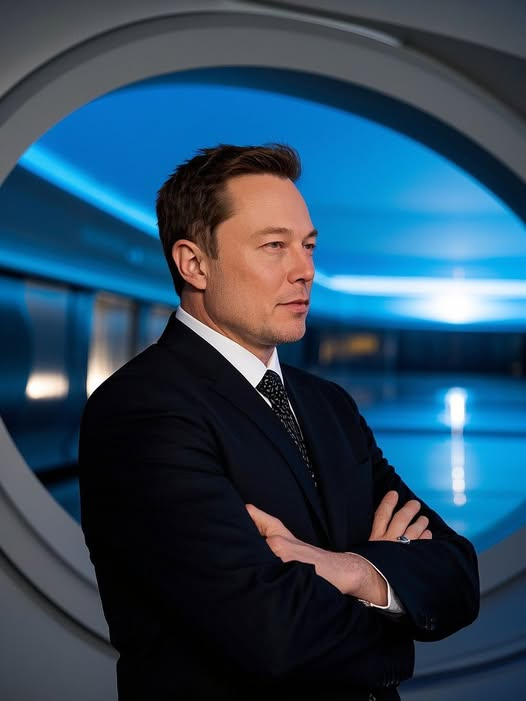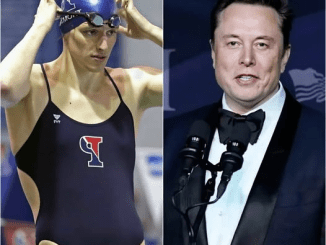
Imagine traveling from Los Angeles to San Francisco in just 30 minutes—no traffic, no airport security, just pure speed. This is the vision behind Hyperloop, a high-speed transportation system that could change the way we move forever.
First proposed by Elon Musk in 2013, Hyperloop promises to be faster than a plane, cheaper than a train, and as smooth as a luxury car ride. But can it really work? Or is it just another sci-fi dream that will never leave the blueprint stage?
Let’s explore how Musk’s Hyperloop could reshape the future of transportation.
The Birth of Hyperloop: Musk’s Answer to Traffic Jams
Musk’s inspiration for Hyperloop came from something many people can relate to: frustrating traffic.
🚗 Gridlock Frustration: Stuck in LA’s notorious traffic, Musk described the experience as “soul-crushing” and wondered why modern transportation was still so slow and inefficient.
🛠️ The Big Idea: Instead of sitting in endless car lines or waiting for delayed flights, what if people could travel through vacuum-sealed tubes at airplane speeds—without leaving the ground?
📜 The 2013 White Paper: Musk outlined his Hyperloop concept in an open-source white paper, inviting engineers, companies, and startups to develop the technology. Unlike Tesla or SpaceX, Musk didn’t patent Hyperloop, encouraging global collaboration.
💡 How It Works:
- Passenger pods float on a cushion of air or magnets inside near-vacuum tubes.
- Low air resistance allows speeds of up to 760 mph (1,220 km/h)—faster than most airplanes.
- Solar panels could provide renewable energy, making it sustainable.
If successful, Hyperloop could revolutionize transportation, eliminating long commutes and connecting cities like never before.
Hyperloop in Action: From Concept to Reality
Since Musk’s announcement, multiple companies have competed to bring Hyperloop to life.
🚄 Virgin Hyperloop: Richard Branson’s company has led the race, even successfully testing a passenger ride in 2020.
🏗️ The Boring Company: Musk’s own tunnel-digging startup has explored Hyperloop-inspired tunnels, promising faster, cheaper construction.
🛤️ Prototype Tests: Experimental Hyperloops have reached speeds of 200 mph, proving that the technology is possible.
🚀 Ambitious Goals: Some firms hope to launch commercial Hyperloop routes by 2030, with proposed lines in the U.S., Europe, and the Middle East.
But while progress is happening, many obstacles remain.
Challenges: The Roadblocks to Hyperloop’s Future
💸 High Costs: Building a nationwide Hyperloop could cost hundreds of billions of dollars—who will pay?
🌪️ Technical Issues: Hyperloop tubes need to be airtight, earthquake-resistant, and perfectly maintained—a huge engineering challenge.
😨 Safety Concerns: What happens if a pod malfunctions at 700 mph? Would passengers be trapped or at risk?
📜 Government Regulations: New transportation technologies must pass strict safety and legal approvals, which could delay projects for decades.
Critics argue that traditional high-speed rail is a more practical alternative. However, Musk and Hyperloop supporters believe the benefits outweigh the risks.
The Potential Impact of Hyperloop
If Musk’s vision succeeds, the world could see:
🌆 Cities Shrinking: Living in one city and working in another would be normal—Hyperloop could turn a two-hour commute into 10 minutes.
♻️ Eco-Friendly Travel: If powered by solar energy, Hyperloop could be greener than airplanes, trains, or cars.
🚀 Faster Than Airplanes: Imagine going from New York to Washington, D.C., in under 30 minutes—no security checks, no delays.
👷 Massive Job Creation: Hyperloop projects could create millions of jobs in engineering, construction, and maintenance.
Final Verdict: A Game-Changer or Just a Dream?
🔮 Is Hyperloop the future of travel? Maybe—but it won’t happen overnight.
While Musk’s Hyperloop concept has inspired a new wave of innovation, its technical and financial challenges remain enormous.
If Musk and other innovators overcome these obstacles, Hyperloop could reshape global transportation and make slow, outdated transit systems a thing of the past.
Until then, we can only watch, wait, and hope that the future arrives faster than we think.


